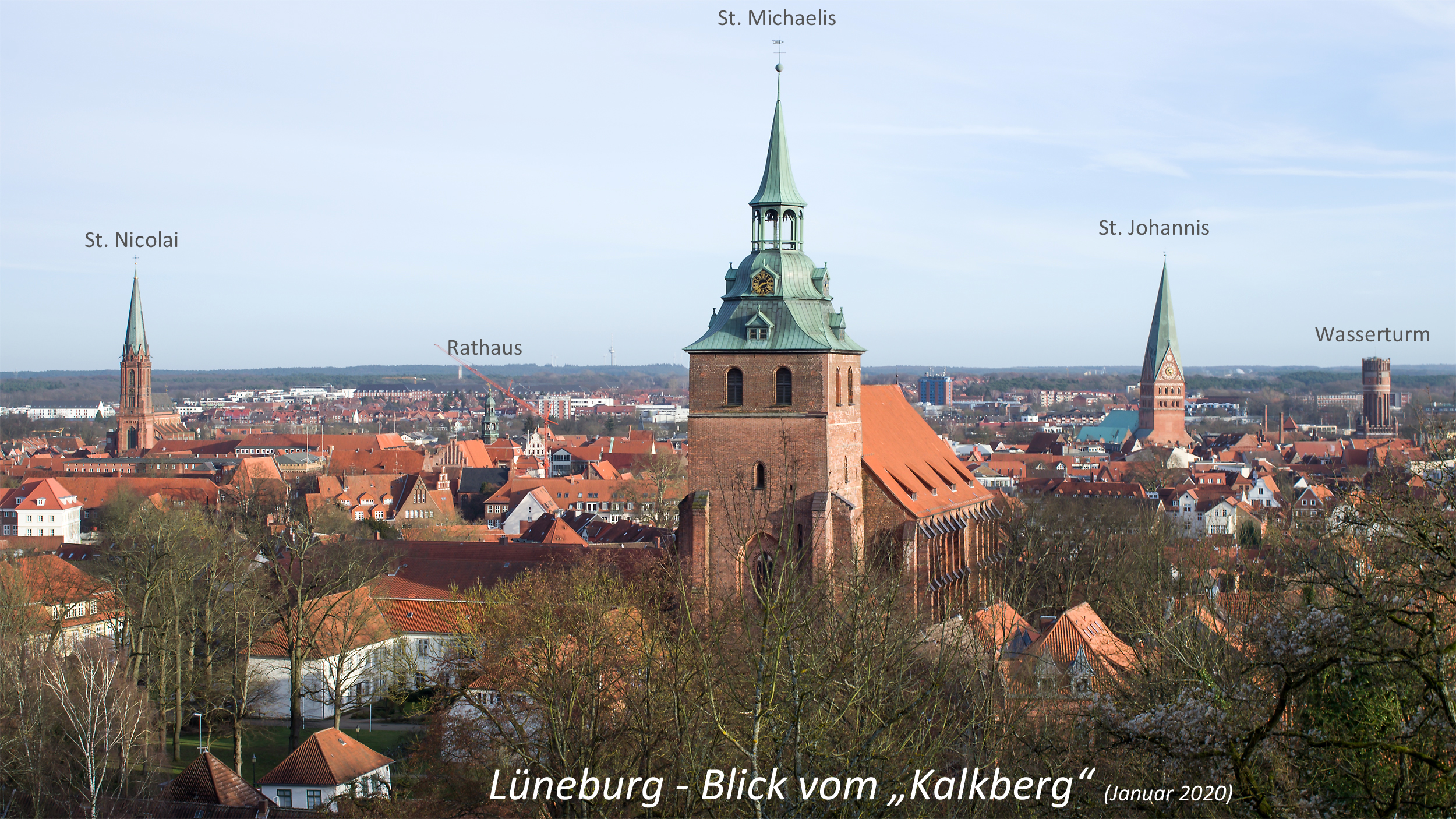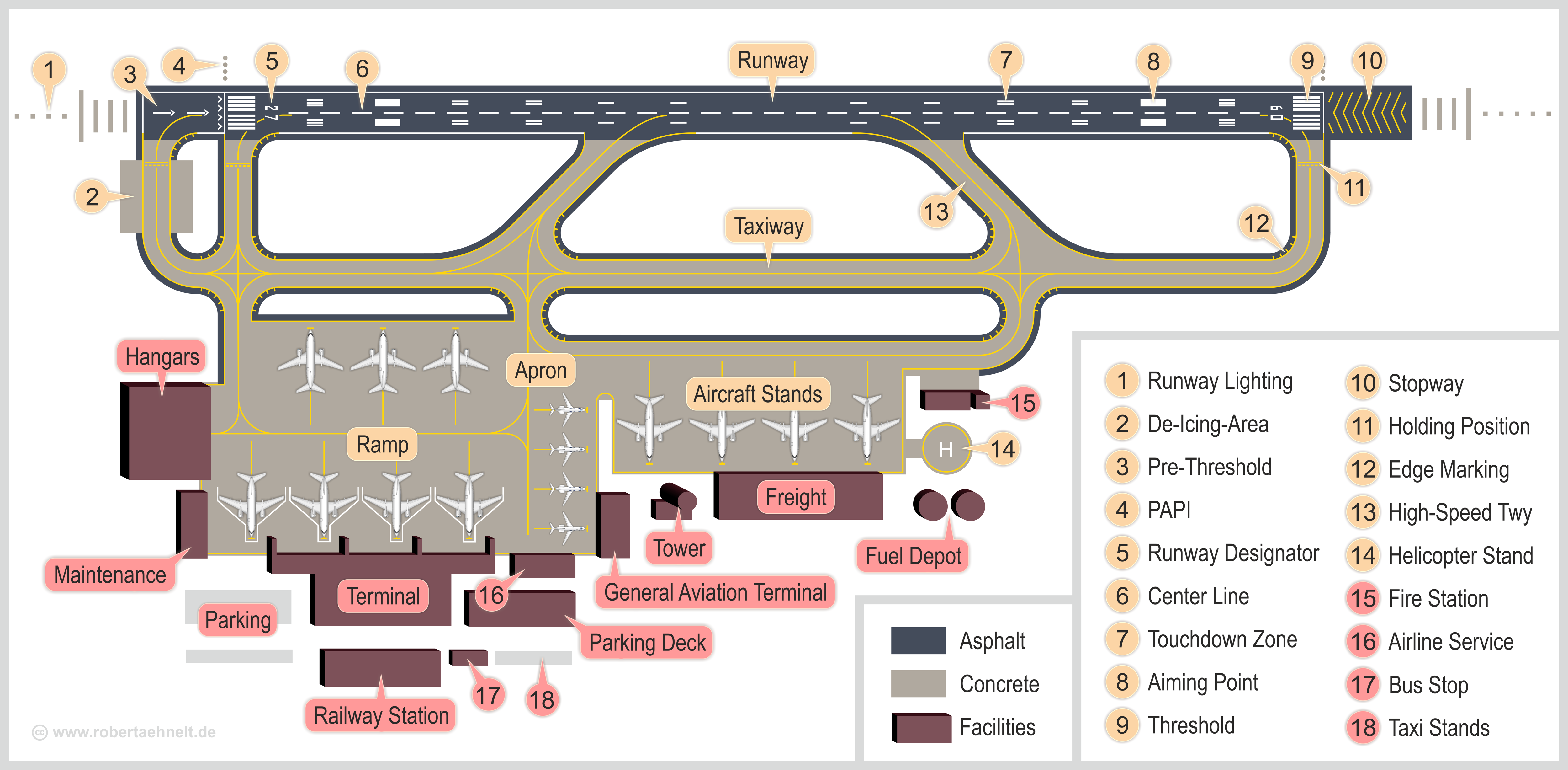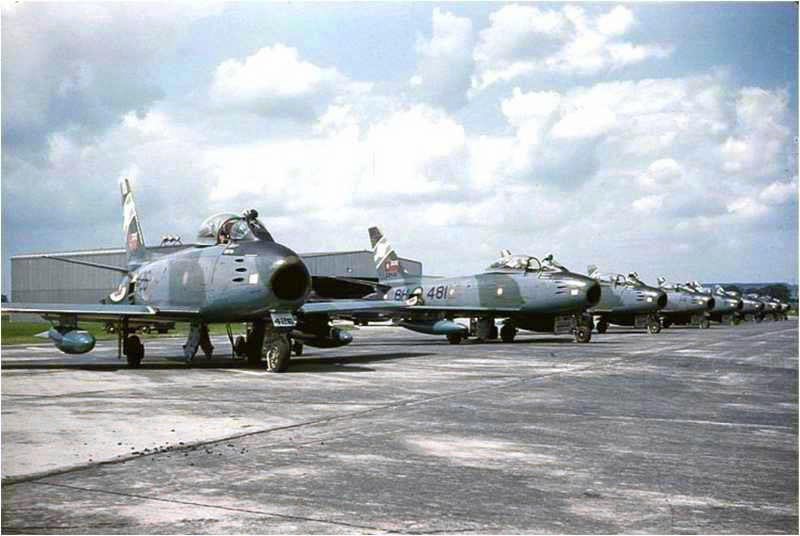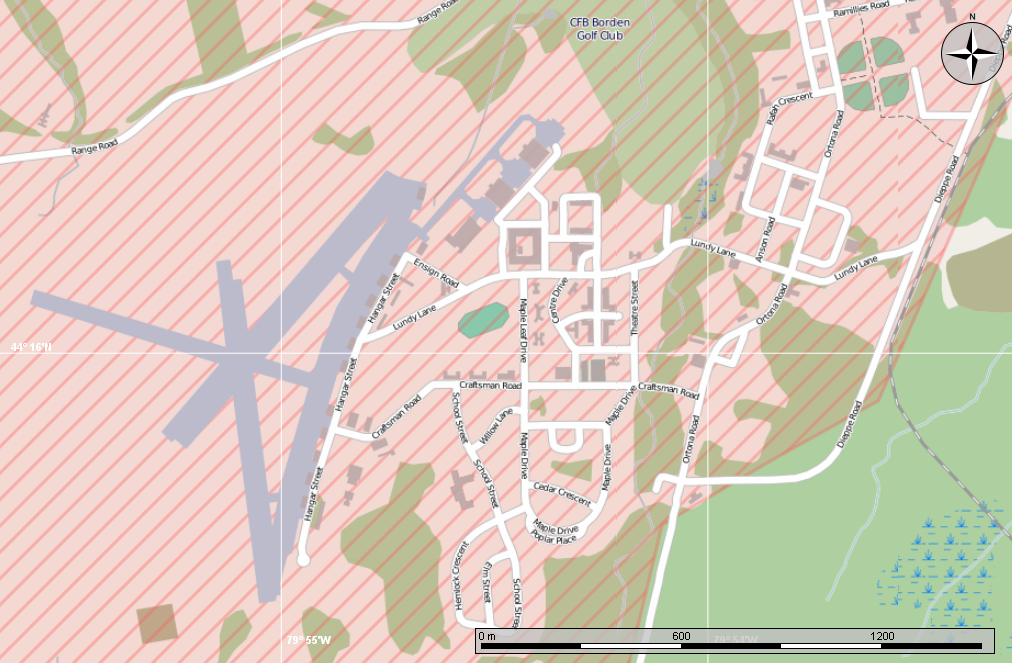|
Lüneburg Airfield
Special landing field Lüneburg (ICAO airport code EDHG) is an airfield near Lüneburg in Lower Saxony state, Germany. It is approved for motor planes, motor glider, microlights and gliders up to a maximum weight of 2000 kg. Helicopters are approved up to a weight of 5700 kg and balloon rides can be undertaken from the airfield. It serves the Lüneburg region as a popular destination for families as well as for external private pilots and Lüneburg business people. The airfield thus fulfils an important task as an infrastructural hub and for club life in the Lüneburg Heath region. ;History Before civilian use, today's airfield was an airfield of the Wehrmacht Luftwaffe, before and during the Second World War. At least 14 major active flying ''gruppes'' and ''geschwaders'' (without school and supplementary units) were stationed here between 1938 and 1945, including Kampfgeschwader 4 and Kampfgeschwader 100. On 18 April 1944, during an air raid on Lüneburg, the Lün ... [...More Info...] [...Related Items...] OR: [Wikipedia] [Google] [Baidu] |
Lüneburg
Lüneburg, officially the Hanseatic City of Lüneburg and also known in English as Lunenburg, is a town in the German Bundesland (Germany), state of Lower Saxony. It is located about southeast of another Hanseatic League, Hanseatic city, Hamburg, and belongs to that city's wider Hamburg Metropolitan Region, metropolitan region. The capital (political), capital of the Lüneburg (district), district which bears its name, it is home to roughly 77,000 people. Lüneburg's urban area, which includes the surrounding communities of Adendorf, Bardowick, Barendorf and Reppenstedt, has a population of around 103,000. Lüneburg has been allowed to use the title ('Hanseatic Town') in its name since 2007, in recognition of its membership in the former Hanseatic League. Lüneburg is also home to Leuphana University of Lüneburg, Leuphana University. History ImageSize = width:1050 height:100 PlotArea = width:1000 height:50 left:50 bottom:25 DateFormat = yyyy Period = from:950 till:2000 Tim ... [...More Info...] [...Related Items...] OR: [Wikipedia] [Google] [Baidu] |
Kampfgeschwader 4
''Kampfgeschwader'' 4 "General Wever" (KG 4) (Battle Wing 4) was a Luftwaffe bomber Wing (air force unit), wing during World War II. The unit was formed in May 1939. The unit operated the Dornier Do 17, Junkers Ju 88 and Heinkel He 111 medium bombers, with later service on the Heinkel He 177 heavy bomber. The wing was named after Walther Wever (general), General Walther Wever, the prime pre-war proponent for a strategic bombing capability for the Luftwaffe, who was killed in an aircraft accident in 1936. History ''Stab''/KG 4 and I./KG 4 were formed on 1 May 1939 at Erfurt and was initially equipped with the He 111 Ps, borrowed from KG 253. The unit spent most of the summer training and recruiting personnel from the flight schools. Operational history Invasion of Poland On 25 August the unit was transferred to Langenau under the Command of ''Luftflotte 4''. It began the Polish Campaign attacking airfields and railway yards. ''Stab''/KG 4 was withdrawn on 20 September. I./KG 4 a ... [...More Info...] [...Related Items...] OR: [Wikipedia] [Google] [Baidu] |
Airports In Lower Saxony
An airport is an aerodrome with extended facilities, mostly for commercial air transport. They usually consist of a landing area, which comprises an aerially accessible open space including at least one operationally active surface such as a runway for a plane to take off and to land or a helipad, and often includes adjacent utility buildings such as control towers, hangars and terminals, to maintain and monitor aircraft. Larger airports may have airport aprons, taxiway bridges, air traffic control centres, passenger facilities such as restaurants and lounges, and emergency services. In some countries, the US in particular, airports also typically have one or more fixed-base operators, serving general aviation. Airport operations are extremely complex, with a complicated system of aircraft support services, passenger services, and aircraft control services contained within the operation. Thus airports can be major employers, as well as important hubs for tourism and o ... [...More Info...] [...Related Items...] OR: [Wikipedia] [Google] [Baidu] |
RAF Gatow
Royal Air Force Gatow, or more commonly RAF Gatow, was a British Royal Air Force station (military airbase) in the district of Gatow in south-western Berlin, west of the Havel river, in the borough of Spandau. It was the home for the only known operational use of flying boats in central Europe, and was later used for photographic reconnaissance missions by de Havilland Canada DHC-1 Chipmunks over East Germany. Part of the former airfield is now called General Steinhoff-Kaserne, and is home to the Luftwaffenmuseum der Bundeswehr, the German Air Force Museum. Also on the site of the former Royal Air Force station, but not part of ''General Steinhoff-Kaserne'', is a school, the Hans-Carossa-Gymnasium, as well as houses for government employees of the Federal Republic of Germany. This part of the former airfield has since 2003 been part of the district of Berlin-Kladow. History Luftwaffe use, 1934–1945 The airfield was originally constructed in 1934 and 1935 by the Luftwaf ... [...More Info...] [...Related Items...] OR: [Wikipedia] [Google] [Baidu] |
Berlin Airlift
The Berlin Blockade (24 June 1948 – 12 May 1949) was one of the first major international crises of the Cold War. During the multinational occupation of post–World War II Germany, the Soviet Union blocked the Western Allies' railway, road, and canal access to the sectors of Berlin under Western control. The Soviets offered to drop the blockade if the Western Allies withdrew the newly introduced Deutsche Mark from West Berlin. The Western Allies organised the Berlin Airlift (German: ''Berliner Luftbrücke'', lit. "Berlin Air Bridge") from 26 June 1948 to 30 September 1949 to carry supplies to the people of West Berlin, a difficult feat given the size of the city and the population. American and British air forces flew over Berlin more than 250,000 times, dropping necessities such as fuel and food, with the original plan being to lift 3,475 tons of supplies daily. By the spring of 1949, that number was often met twofold, with the peak daily delivery totalling 12,941 ton ... [...More Info...] [...Related Items...] OR: [Wikipedia] [Google] [Baidu] |
RAF Second Tactical Air Force
The Second Tactical Air Force (2TAF) was one of three tactical air forces within the Royal Air Force (RAF) during and after the World War II, Second World War. It was made up of Squadron (aviation), squadrons and personnel from the RAF, other Commonwealth of Nations, British Commonwealth air forces, and exiles from occupied Europe, German-occupied Europe. Renamed as British Air Forces of Occupation in 1945, 2TAF was recreated in 1951 and became Royal Air Force Germany in 1959. Formation 2TAF was formed on 1 June 1943 as HQ Tactical Air Force from RAF Army Cooperation Command, Army Co-operation Command, in connection with preparations then in train to invade Europe a year later. It took units from both RAF Fighter Command, Fighter Command and RAF Bomber Command, Bomber Command in order to form a force capable of supporting the British Army in the field. Bomber Command provided No. 2 Group RAF, No. 2 Group with light bombers; Fighter Command was split into the Air Defence of Great ... [...More Info...] [...Related Items...] OR: [Wikipedia] [Google] [Baidu] |
430 Tactical Helicopter Squadron
430 Tactical Helicopter Squadron is a unit of the Canadian Forces under the Royal Canadian Air Force. It operates Bell CH-146 Griffons from CFB Valcartier, near Quebec City in Quebec, Canada. History No. 430 Squadron RCAF was a unit of the Royal Canadian Air Force formed during World War II as the "City of Sudbury" squadron in 1943. Initially created as an army co-operation squadron, 430 was redesignated as a fighter reconnaissance unit later that year. The unit was stationed in England, France, Belgium, the Netherlands, and Germany, and flew photo reconnaissance missions in support of planning for the Normandy landings. After D-Day, missions included before-and-after photography of attacks on V-1 flying bomb launch sites and support for ground forces. 430 Squadron was disbanded in Germany in August 1945.430 ... [...More Info...] [...Related Items...] OR: [Wikipedia] [Google] [Baidu] |
414 Electronic Warfare Support Squadron
414 Electronic Warfare Support Squadron is a unit of the Royal Canadian Air Force. It is in Ottawa and conducts electronic warfare support training for other units in the Canadian Armed Forces. History World War II On 13 August 1941, No 414 Army Co-operation Squadron was formed at RAF Croydon, England, flying Westland Lysander and Curtiss Tomahawk aircraft. On 28 June 1943 the squadron's name was changed to 414 Fighter Reconnaissance Squadron to reflect its role, and later known as 414 “City of Sarnia” Squadron (Sarnia Imperials). Throughout the Second World War the squadron was based at numerous airfields in England and in continentental Europe flying Supermarine Spitfire and North American Mustang aircraft. During this period, the squadron provided photo reconnaissance, intelligence and ground attacks for both the Dieppe Raid and the allied Invasion of Europe. It accounted for 29 enemy aircraft destroyed and 11 damaged, 76 locomotives and 12 naval vessels destroyed. Af ... [...More Info...] [...Related Items...] OR: [Wikipedia] [Google] [Baidu] |
400 Tactical Helicopter Squadron
400 "City of Toronto" Tactical Helicopter and Training Squadron is part of 1 Wing, and as such a lodger unit of Canadian Forces Base Borden. The squadron operates the CH-146 Griffon. History The squadron was formed as No. 10 Army Co-Operation Squadron at Toronto, Ontario on 5 October 1932, when it flew from the Trethewey Farm Airfield ( De Lesseps Field) from 1934 to 1939. On 15 November 1937, it was renumbered No. 110 "City of Toronto" Army Co-Operation Squadron. When the squadron was called out on active service 3 September 1939, it first deployed to CFB Rockcliffe (now Ottawa/Rockcliffe Airport), Ottawa, Ontario for conversion to the Westland Lysander aircraft. The new commanding officer (CO) at that time was Squadron Leader (S/L) Wilbur Dennison Van Vliet, an experienced peacetime flier. By early February 1940, the squadron was ready to depart to the United Kingdom, travelling by rail to Halifax, Nova Scotia and then by steamship across the Atlantic on 15 February. The ... [...More Info...] [...Related Items...] OR: [Wikipedia] [Google] [Baidu] |
Kampfgeschwader 100
''Kampfgeschwader'' 100 (KG 100) was a ''Luftwaffe'' medium and heavy bomber wing of World War II and the first military aviation unit to use a precision-guided munition (the Fritz X anti-ship glide bomb) in combat to sink a warship (the Italian battleship ''Roma'') on 9 September 1943. History KG 100 was created from '' Kampfgruppe 100'', a specialist pathfinder unit formed on 26 August 1938 as ''Luftnachrichten Abteilung'' 100 at Köthen. On 18 November 1939 it was renamed K.Gr. 100. It was the first unit to use Y-''Verfahren'' (Y-Control) navigation aids. It spent the inter-war years training on high-altitude flights to North Africa, the Eastern Mediterranean and northern Finland. K.Gr. 100 participated in all of the continental campaigns from 1939 to 1941, in medium bomber and maritime interdiction operations. Stab./KG 100 was formed on 29 November 1941 at Châtres, France and placed under the command of ''Oberst'' Heinz-Ludwig von Holleben. The formation process was s ... [...More Info...] [...Related Items...] OR: [Wikipedia] [Google] [Baidu] |
Second World War
World War II or the Second World War (1 September 1939 – 2 September 1945) was a World war, global conflict between two coalitions: the Allies of World War II, Allies and the Axis powers. World War II by country, Nearly all of the world's countries participated, with many nations mobilising all resources in pursuit of total war. Tanks in World War II, Tanks and Air warfare of World War II, aircraft played major roles, enabling the strategic bombing of cities and delivery of the Atomic bombings of Hiroshima and Nagasaki, first and only nuclear weapons ever used in war. World War II is the List of wars by death toll, deadliest conflict in history, causing World War II casualties, the death of 70 to 85 million people, more than half of whom were civilians. Millions died in genocides, including the Holocaust, and by massacres, starvation, and disease. After the Allied victory, Allied-occupied Germany, Germany, Allied-occupied Austria, Austria, Occupation of Japan, Japan, a ... [...More Info...] [...Related Items...] OR: [Wikipedia] [Google] [Baidu] |








